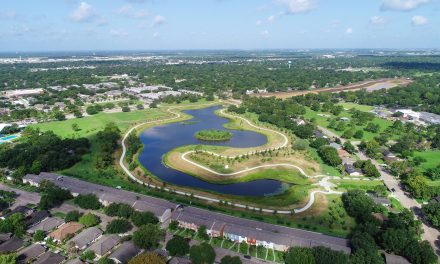Among major countries, the People’s Republic of China’s annual per capita freshwater resources are among the least abundant. Water pollution combined with water scarcity threatens to stifle the country’s rapid economic growth.
At Chao Lake, a man covers his nose to stave off putrid smells arising from the swirls of blue-green algae on the water’s surface. Chao Lake is the fifth largest in the country, but like many water bodies in China, it is severely polluted. However, Chao Lake soon will be the site of experiments in several market-based strategies for reducing agricultural nonpoint source pollution.
The Asian Development Bank (ADB) has chosen several large lakes for remediation projects, one of which is Chao Lake— a natural, 2000-ha (5000-ac) waterbody. Located near Hefei, it is the water source for this large urban center. However, when Hefei asked for funding to build more treatment plants and constructed wetlands, ADB wanted to see a significant effort to attack the real source of Chao Lake degradation — agricultural nonpoint source pollution.
Two market-based mechanisms being considered for experimentation at Chao Lake are eco-compensation and payment for ecosystem services (PES), which are similar concepts that overlap to some degree. China is in the process of developing a national eco-compensation ordinance but has not yet taken steps to formalize PES methods.
“Eco-compensation generally includes government funding or incentives to compensate land users for loss of income or land use rights incurred due to environmental protection,” said Cy Jones, senior associate at the World Resources Institute (Washington, D.C.), who is leading several technical studies in Chao Lake. “Subsidizing soil testing costs for phosphorus is an example,” he said.
The eco-compensation concept includes payment for ecosystem service mechanisms, but does not involve loss of property or land use rights. Instead, the land user produces and sells some kind of environmental benefit. “Maintenance of x acres of habitat, for example,” Jones said, “Or a phosphorus load reduction, with a wastewater treatment plant buying the phosphorus credits.”
One difference between China and the U.S. is the lack of private property. The Chinese government owns all land in China and leases it to users, which makes eco-compensation easier in one sense, Jones said. The government can cancel leases and compensate the lessee, which happens frequently when urban development encroaches on agricultural areas.
Yet, there are millions of small family farms of 0.5 to 1 ha (1–2 ac), making it much more difficult to institute efficient programs for reducing agricultural nonpoint source pollution. “In China, there are not many effective conservation practices in place,” Jones said. “People farm right up to a lake shore, and runoff from manure storage areas is frequently controlled improperly.”
Funding at Chao Lake eventually could exceed $1 billion and represents a shift toward nonpoint source control solutions that are more comprehensive and coordinated. By first quantifying the problem and corresponding solutions, China can begin to more effectively address water quality needs and engage land users through eco-compensation and PES — starting with the Chao Lake pilot.





